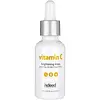What's inside
What's inside
 Key Ingredients
Key Ingredients

 Benefits
Benefits

 Concerns
Concerns

 Ingredients Side-by-side
Ingredients Side-by-side

Water
Skin ConditioningGlycerin
HumectantCyclopentasiloxane
EmollientPropylene Glycol
HumectantCyclohexasiloxane
EmollientVolcanic Soil
Skin ConditioningPhenoxyethanol
PreservativeHydroxyethyl Acrylate/Sodium Acryloyldimethyl Taurate Copolymer
Emulsion StabilisingCaprylyl Glycol
EmollientIsohexadecane
EmollientAscorbic Acid
AntioxidantPentylene Glycol
Skin ConditioningCitric Acid
Buffering1,2-Hexanediol
Skin ConditioningXanthan Gum
EmulsifyingPolysorbate 60
EmulsifyingTamarindus Indica Seed Gum
Emulsion StabilisingDisodium EDTA
Sorbitan Isostearate
EmulsifyingAmylopectin
Ethylhexylglycerin
Skin ConditioningHyaluronic Acid
HumectantBiosaccharide Gum-1
HumectantWater, Glycerin, Cyclopentasiloxane, Propylene Glycol, Cyclohexasiloxane, Volcanic Soil, Phenoxyethanol, Hydroxyethyl Acrylate/Sodium Acryloyldimethyl Taurate Copolymer, Caprylyl Glycol, Isohexadecane, Ascorbic Acid, Pentylene Glycol, Citric Acid, 1,2-Hexanediol, Xanthan Gum, Polysorbate 60, Tamarindus Indica Seed Gum, Disodium EDTA, Sorbitan Isostearate, Amylopectin, Ethylhexylglycerin, Hyaluronic Acid, Biosaccharide Gum-1
Water
Skin ConditioningGlycerin
HumectantAcetamidoethoxyethanol
HumectantPropylene Glycol
HumectantSodium Acrylates Crosspolymer-2
AbsorbentCyclopentasiloxane
EmollientPolysorbate 20
Emulsifying1,2-Hexanediol
Skin ConditioningMenthyl Lactate
MaskingResveratrol
AntioxidantPalmitoyl Pentapeptide-4
Skin ConditioningPalmitoyl Tetrapeptide-50
Skin ConditioningHeptapeptide-15 Palmitate
Skin ConditioningPalmitoyl Hexapeptide-52
Skin ConditioningPalmitoyl Heptapeptide-18
Skin ConditioningDiamond Powder
AbrasiveMethylglucoside Phosphate
Skin ConditioningCopper Lysinate/Prolinate
Skin ConditioningSodium Hyaluronate
HumectantLactic Acid/Glycolic Acid Copolymer
Skin ConditioningPolyvinyl Alcohol
Xanthan Gum
EmulsifyingDimethicone Crosspolymer
Emulsion StabilisingDimethicone
EmollientPolyacrylate Crosspolymer-6
Emulsion StabilisingHydroxyacetophenone
AntioxidantGlyceryl Caprylate
EmollientPhenylpropanol
MaskingPhenoxyethanol
PreservativeCaprylyl Glycol
EmollientWater, Glycerin, Acetamidoethoxyethanol, Propylene Glycol, Sodium Acrylates Crosspolymer-2, Cyclopentasiloxane, Polysorbate 20, 1,2-Hexanediol, Menthyl Lactate, Resveratrol, Palmitoyl Pentapeptide-4, Palmitoyl Tetrapeptide-50, Heptapeptide-15 Palmitate, Palmitoyl Hexapeptide-52, Palmitoyl Heptapeptide-18, Diamond Powder, Methylglucoside Phosphate, Copper Lysinate/Prolinate, Sodium Hyaluronate, Lactic Acid/Glycolic Acid Copolymer, Polyvinyl Alcohol, Xanthan Gum, Dimethicone Crosspolymer, Dimethicone, Polyacrylate Crosspolymer-6, Hydroxyacetophenone, Glyceryl Caprylate, Phenylpropanol, Phenoxyethanol, Caprylyl Glycol
Ingredients Explained
These ingredients are found in both products.
Ingredients higher up in an ingredient list are typically present in a larger amount.
1,2-Hexanediol is a synthetic liquid and another multi-functional powerhouse.
It is a:
- Humectant, drawing moisture into the skin
- Emollient, helping to soften skin
- Solvent, dispersing and stabilizing formulas
- Preservative booster, enhancing the antimicrobial activity of other preservatives
Caprylyl Glycol is a humectant and emollient, meaning it attracts and preserves moisture.
It is a common ingredient in many products, especially those designed to hydrate skin. The primary benefits are retaining moisture, skin softening, and promoting a healthy skin barrier.
Though Caprylyl Glycol is an alcohol derived from fatty acids, it is not the kind that can dry out skin.
This ingredient is also used as a preservative to extend the life of products. It has slight antimicrobial properties.
Learn more about Caprylyl GlycolCyclopentasiloxane, or D5, is a silicone used to improve texture of products and trap moisture.
D5 is considered lightweight and volatile. Volatile means it evaporates quickly after application. Once evaporated, D5 leaves a thin barrier that helps keep skin hydrated.
It is also an emollient. Emollients help soften the skin and prevent water loss. Silicones create a silky texture in products. D5 helps other ingredients become more spreadable.
Studies show D5 is safe to use in skincare products. We recommend speaking with a skincare professional if you have concerns.
Learn more about CyclopentasiloxaneGlycerin is already naturally found in your skin. It helps moisturize and protect your skin.
A study from 2016 found glycerin to be more effective as a humectant than AHAs and hyaluronic acid.
As a humectant, it helps the skin stay hydrated by pulling moisture to your skin. The low molecular weight of glycerin allows it to pull moisture into the deeper layers of your skin.
Hydrated skin improves your skin barrier; Your skin barrier helps protect against irritants and bacteria.
Glycerin has also been found to have antimicrobial and antiviral properties. Due to these properties, glycerin is often used in wound and burn treatments.
In cosmetics, glycerin is usually derived from plants such as soybean or palm. However, it can also be sourced from animals, such as tallow or animal fat.
This ingredient is organic, colorless, odorless, and non-toxic.
Glycerin is the name for this ingredient in American English. British English uses Glycerol/Glycerine.
Learn more about GlycerinPhenoxyethanol is a preservative that has germicide, antimicrobial, and aromatic properties. Studies show that phenoxyethanol can prevent microbial growth. By itself, it has a scent that is similar to that of a rose.
It's often used in formulations along with Caprylyl Glycol to preserve the shelf life of products.
Propylene Glycol is an odorless, colorless liquid. As a humectant, it helps skin retain moisture. It also aids in delivering active ingredients.
Another role of this ingredient is preventing a product from melting or freezing. Propylene glycol also adds antimicrobrial properties to a product, elongating product lifespan.
This ingredient is considered an organic alcohol and commonly added into both cosmetics and foods.
Those with sensitive skin or conditions may develop a rash when using this ingredient.
Learn more about Propylene GlycolWater. It's the most common cosmetic ingredient of all. You'll usually see it at the top of ingredient lists, meaning that it makes up the largest part of the product.
So why is it so popular? Water most often acts as a solvent - this means that it helps dissolve other ingredients into the formulation.
You'll also recognize water as that liquid we all need to stay alive. If you see this, drink a glass of water. Stay hydrated!
Learn more about WaterXanthan gum is used as a stabilizer and thickener within cosmetic products. It helps give products a sticky, thick feeling - preventing them from being too runny.
On the technical side of things, xanthan gum is a polysaccharide - a combination consisting of multiple sugar molecules bonded together.
Xanthan gum is a pretty common and great ingredient. It is a natural, non-toxic, non-irritating ingredient that is also commonly used in food products.
Learn more about Xanthan Gum